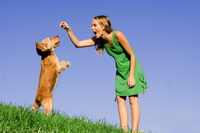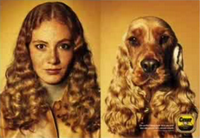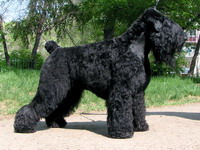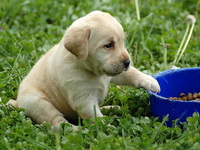General information about dog training
 Some owners categorically declare that their dog is naturally natural, and training will make him a boring, obedient and inert dog. And this is fundamentally wrong. The dog inherits from its ancestors only instincts, while it is forced to live in human society, and the responsibility for its behavior lies entirely with the owner. In a society, the importance of control over a dog cannot be overestimated, because it is the key to security and mutual understanding. An experienced owner constantly notices the body language of his pet, catches a change in the tonality of the barking, traces the direction of attention and gaze. Purposeful training allows you to direct the energy of the animal in a useful direction, and the gradual training allows you to master more and more complex tasks. Thus, training is the development in animals of certain skills (habits) necessary to control their behavior and use for human needs.
Some owners categorically declare that their dog is naturally natural, and training will make him a boring, obedient and inert dog. And this is fundamentally wrong. The dog inherits from its ancestors only instincts, while it is forced to live in human society, and the responsibility for its behavior lies entirely with the owner. In a society, the importance of control over a dog cannot be overestimated, because it is the key to security and mutual understanding. An experienced owner constantly notices the body language of his pet, catches a change in the tonality of the barking, traces the direction of attention and gaze. Purposeful training allows you to direct the energy of the animal in a useful direction, and the gradual training allows you to master more and more complex tasks. Thus, training is the development in animals of certain skills (habits) necessary to control their behavior and use for human needs.
For successful training it is necessary to observe the following rules.
1. The emergence of a conditioned reflex is possible only if there are two stimuli: the conditioned (team) and the unconditioned (food, leash jerk).
2. The development of a conditioned reflex should be based on the basis of a strong unconditioned reflex. Only in this case the conditioned reflex will be developed sufficiently firmly and in a short time. Therefore, if the conditioned reflex is produced on the basis of an unconditioned food one, then it is recommended not to feed the dog before work. If the “Sit!” Command is given in a loud voice, and not pushing on the waist, but only touching it (i.e. giving a slight irritation), then a reflex is not formed.
3. Conditional and unconditioned stimuli must be correctly combined in time. Unconditioned stimulus used in 1-2 seconds after the conditioned. For example, they give the command “Near!” And after 1-2 seconds they make a leap jerk. Reverse order leads to zero result.
4. To develop a conditioned reflex, time and a sufficient number of repetitions of conditioned and unconditioned stimuli are necessary. At the training stage, teams are recommended to repeat the exercise 10 to 15 times a day. More frequent repetition will tire the puppy and make the process of training boring and uninteresting.
5. Initial training should be carried out in a quiet, peaceful place. Extraneous stimuli (loud noises, strange smells, moving objects, unauthorized people and animals) cause an approximate reflex in the puppy and distract it. However, when the command is learned and the conditioned reflex is already developed, the situation should be gradually complicated, so that the dog can work in conditions of any complexity.
6. Teams should be given clearly, once, without unnecessary words and shouting.
7. The strength of the stimuli must match the characteristics of the nervous system of the dog. A working dog must have a strong temperament, be cheerful and healthy. In an animal that has mental problems or physical ailments, conditioned reflexes are produced poorly.
8. The trainer should monitor their emotions. Handle a dog should be calm, without anger and irritation. With excessive psychological pressure and gross physical impact, the learning process is inhibited by protective reactions of the body.
And one more secret of success. The trainers know that the lesson needs to be completed at the moment when the dog is at the highest point of success. In other words, at the end of the lesson, get your pet to “cleanly” execute this or that command. This is facilitated by the recommended structure of the lesson: “new material” is first studied, and later it comes time to repeat well-known exercises. So the dog better remembers what she did correctly, reinforcing the desired stereotype of behavior in the future. Finishing a lesson on positive emotions, you keep the dog interested in learning and enjoy the process of training itself. Feeling your support and approval, the dog becomes more confident in their actions. Over time, the desire to earn your praise and location becomes the main guiding force of animal behavioral responses.
Dog training is carried out by various methods. Under the method of training understand a set of methods and techniques with which the trained dogs develop conditioned reflexes. Usually use mechanical, tasty, contrasting, imitative methods, as well as the method of switching behavioral reactions.
When using the mechanical method, the conditioned stimulus (team) is reinforced by mechanical action — negative (pressing, jerking the leash, striking the rod) or positive (stroking, scratching, affectionate tapping). Thus, practicing the Sit! Command is accompanied by hand pressing in the dog’s sacrum and lightly pulling the leash up and back. Keep in mind that severe negative effects can cause depression and even open fear of the trainer in the four-pupil. In addition, even such mechanical effects as physical caress can distract the dog too much.



